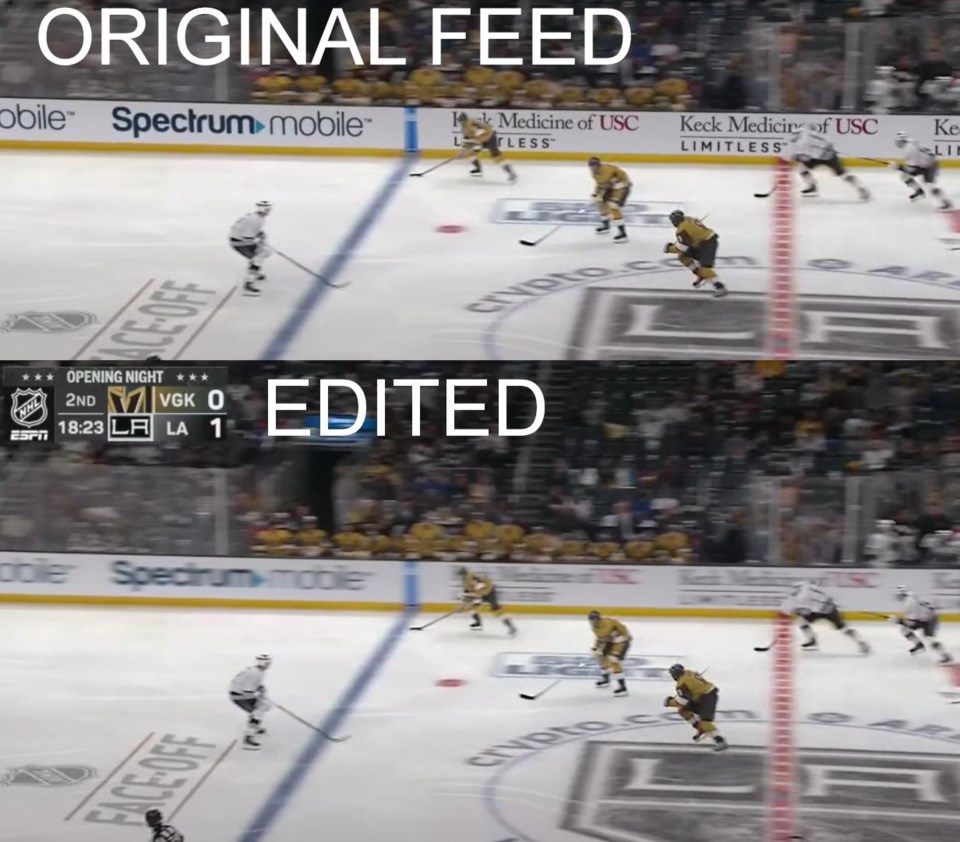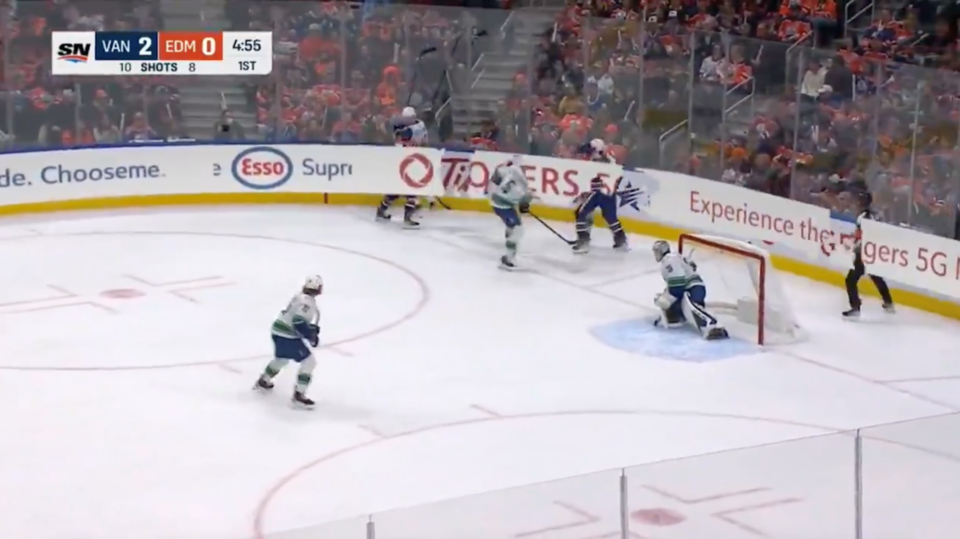The NHL’s endless search for more advertising revenue has already crossed some lines that would seemingly never be crossed.
A global pandemic that removed a key revenue stream for NHL teams — ticket sales and in-arena purchases — so they made the unprecedented move to allow teams to put advertising on helmets. That has now been followed by ads on what is sometimes treated as sacred by hockey fans: the hockey sweater.
It’s something that NHL commissioner Gary Bettman said would never happen.
“You’d have to drag me kicking and screaming,” said Bettman in 2015 about adding ads to jerseys. “It would take a lot, a lot, a lot of money.”
Either the NHL and its teams are getting a lot, a lot, a lot of money or the pandemic was enough of an interruption to revenue streams to shatter Bettman’s resolve. At publishing time, PITB can neither confirm nor deny whether there was any kicking or screaming involved.
The Vancouver Canucks have a new helmet sponsor this season — NexGen Energy, a company primarily involved in mining uranium — and are reportedly seeking a jersey sponsor as well, which could go wrong in many ways. Nine other NHL teams have added a sponsor to the jerseys, even two Original Six teams in the Toronto Maple Leafs and Montreal Canadiens.
While there are plenty of people who have concerns about besmirching such iconic jerseys with ads, they at least don’t change the viewing experience all that much. The tiny ads on the helmets and jerseys are barely visible as the players fly around the ice and can safely be ignored as you watch the game on television.
It’s a lot harder to ignore the other ads that the NHL is pushing this season: virtual board ads that cover up the actual, physical ads for television viewers.
The debut of the NHL's virtual board ads did not go smoothly
Fans quickly grew irritated with the ads during Wednesday’s season opener between the Canucks and Edmonton Oilers when the ads glitched multiple times. The ads jumped from their proper position on the screen in an incredibly distracting manner and even covered up the players themselves at times.
It was a disastrous debut for the ads, which are set to become standard practice in the NHL this season.
It wasn’t just on the Sportsnet broadcast either. Virtual ads appeared on the TNT broadcast in the U.S. and likewise drew the ire of hockey fans.
Perhaps the glitches will be ironed out in the future, preventing the freakouts that appeared on screen during the game between the Canucks and Oilers, but there are other issues with the ads.
One is that some of the ads are animated during the course of play, changing and moving in a way that is distracting from the game itself. That is, of course, by design — they want you to notice the ads, after all — but it makes for an unpleasant viewing experience.
Another issue is that they can cause literal eyestrain because they don’t have any motion blur. This has been pointed out by multiple people — as the play moves up the ice, the players in motion will naturally blur but the ads appear unnaturally sharp and clear. The eye, while trying to follow the course of play, naturally gravitates to what is in focus.
A Reddit user who goes by the handle u/iheartlazers photoshopped an image of the ads to show what they should look like with proper motion blur to prevent eyestrain.

Even if the motion blur is fixed, the digital ads will always look unnatural. Boards in a hockey rink are not a clean and pristine white, but will be covered in puck marks. There’s something uncanny about the ads that doesn’t quite sit right.
You also have to wonder about how the sponsors of the physical ads feel about the new digital ads. Where once an ad could potentially be seen by millions on a national broadcast, now those ads might only be seen by the thousands of fans in the arena. Do they get a cheaper rate for games broadcast with virtual ads? That seems unlikely.
Even with all the issues and fan outcry, the virtual ads are likely here to stay. The NHL has invested in bringing these ads to their television broadcasts and is eager to recoup their investment and add a new revenue stream to the league.
It simply doesn’t matter if the ads make the viewing experience worse — it’s all about the money.




